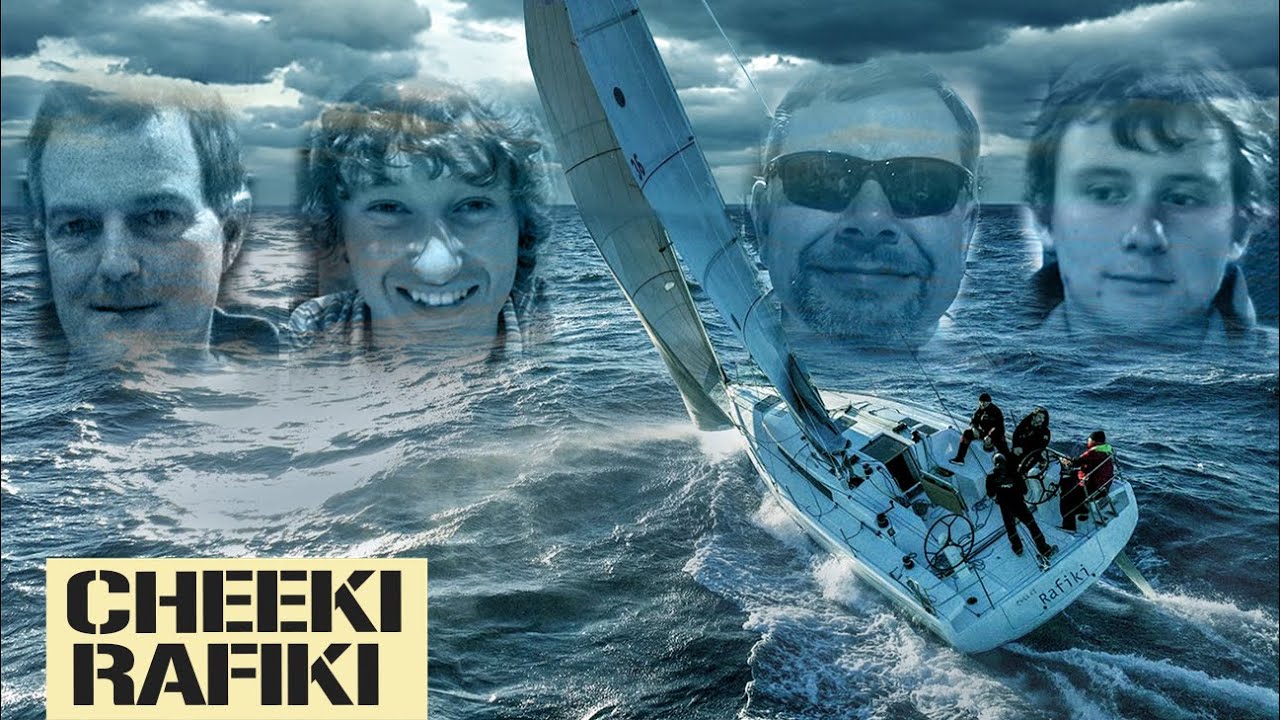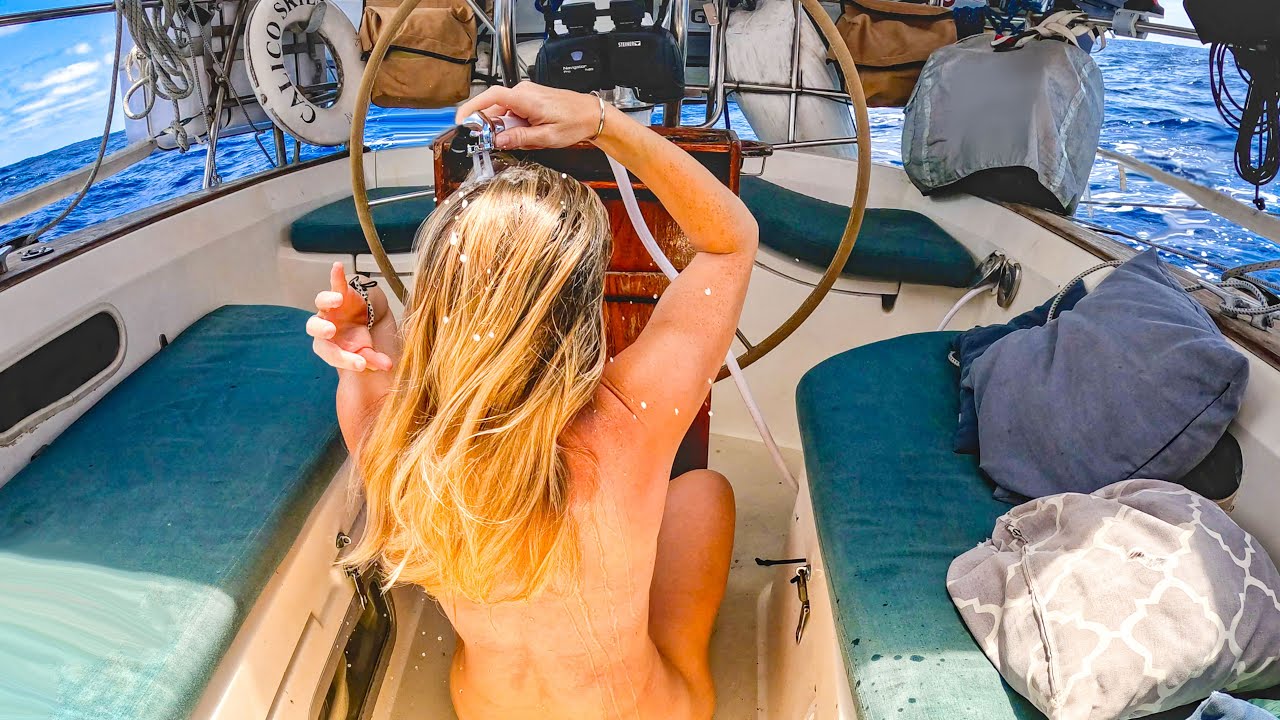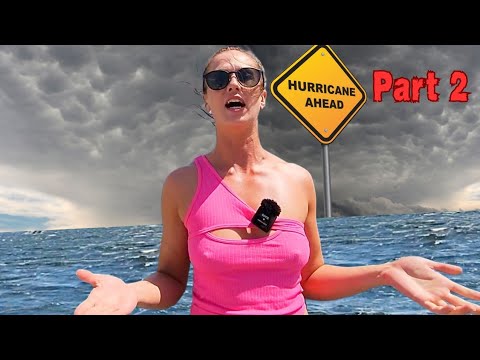https://www.patreon.com/WaterlineStories Dacă v-a plăcut acest videoclip și doriți să vizionați mai multe videoclipuri de pe acest canal fără reclame, vă recomandăm să vă alăturați Patreon-ului nostru. Link-ul este in descriere. Puteți să vă înscrieți gratuit sau să selectați un abonament cu beneficii, de la videoclipuri fără anunțuri până la acces anticipat și apeluri live q și a. Abia aștept să ne întâlnim acolo. Povești de sub linia de plutire Urmărește acest videoclip cu un iaht doborât în marea liberă. Mulțumesc Thom D’Arcy https://www.youtube.com/watch?v=pSNhG9OHuJw
source
Acești 4 bărbați sunt dispăruți pe mare

36 thoughts on “Acești 4 bărbați sunt dispăruți pe mare”
Comments are closed.




clickbait
this happened nearly a decade ago
booooooo
nevertheless so tragic
This is a pretty accurate recitation, but as a former owner of a Beneteau 40.7 (#676) there are a few details in this recitation that are not accurate. The boat weighs about 15,000 lbs. Not 15 tons. The keel was not bolted to the hull, but through the hull to the fiberglass frame. There are heavy duty steel backing plates inside the frame. The point of that construction is to spread the load through the frame to the whole hull. Part of the frame was the sump that actually sticks down into the keel. The picture of Cheeki Rafiki at 1:40 of the video is a beneteau 40.7. The picture at 16:51 that also has "Rafiki" sailing with four men on board is not. It has an open transom and two steering wheels and one long window instead of four on the cabin, so it's a nice picture but not a picture of the boat in question. People need to be concerned about a lot more than the bolts. Any cracking or tearing in the frame or at any of the joints between the frame and the hull, or especially in the sump could give evidence of damage which could then weaken, allow movement of the keel and then weaken the joint then allow breakage of the bolts. I think if the keel was moving it is likely the pre catastrophic leaking was coming from cracking around the sump. Everyone with a boat with a deep keel and short fore and aft connection to the boat should check for all of those kind of things every year, but especially after any groundings.
It will be cool if you add key titles and names in the video description. Honestly, I don’t understand why you don’t do this now.
Under sail, if you lose the keel, the vessel is going to roll instantaneously. Not a moment to prepare. Car crash. Rare and deadly. If you aren’t topside, you’re probably fish food.
I’m a commercial yacht skipper and instructor.
In the training, it’s quite clear, if you’re taking on a lot of water and you’re offshore, you activate all the distress electronics and issue a Mayday.
Sending an email to the owner was not the correct course of action by the skipper.
All that time knowing they were taking on water and never got in life raft ?
This was a disaster
This was a tragedy. Condolences too all of the grieving loved ones. Prayers from South Africa 😢
thank you for sharing this cool story, i would expect these keel bolts would be made from strong corrosion free material like stainless steel 😮
Ive never heard of a sailing school grounding a boat deliberately. Good show otherwise. Fast is fragile.
Very interesting.
I would have thought the movement between the keel and the hull would have made an unusual noise and pointed them to the fact something was loose.
I would have also thought movement in the bolts would have been visible in the bilge.
As for water ingress though, I’ve been on a Beneteau that sustained a punctured hull after being driven onto rocks and it was impossible to tell where the water was coming in as the hull had an internal liner which wasn’t breached.
Interestingly the detritus – presumably left over from the original builders – between the hull and liner soon found its way into the bilge and blocked the pumps. We only had approximately 5 minutes before we had to abandoned ship.
I've sailed the 40.7s in one design and offshore
Sailed Vic-Maui in one. I like them. Saw some 18+ kn speeds in them.
Beneteaus are not known for being robust.
I know nothing about sailing but I have these questions:
1)They seriously design these boats such that if they flip upside down there are no handholds to pull yourself up onto the keel?
2) They don't have quick-release from its mount on the life raft that will work regardless of boats orientation? The life raft is needed when the boat is sinking: Why would it not be retrievable under water?
3)If crew were inside when it flipped, would they have not had any foreplanning for how to escape?
If I had to guess they all got out into the water but none could get on top of the keel. With nothing to hold onto to keep them in contact with the boat then the only remaining option was to keep trying to dive under the boat and free the life raft. If that life raft can't be freed in a capsized state then that's an outrage. I guarantee you at least one of those men dove under repeatedly to try and free the life raft. Maybe the undeployed life raft floats such that they freed it, then had to come up for air but lost its location after diving back down. Or, maybe they accidentally deployed the life raft which was now stuck under the deck, but that should have come out in the investigation.
You know maybe it's the fact that they were so experienced that was the problem maybe they waited to the last minute because they thought they knew what they were doing.
Sorry but the video started off talking about Beneteau, one of the worst boat makers in the world, why anyone would actually choose these hunks of junk is beyond me.
Loosing a keel is the worst fear of any sailor. Because there is no time to react, the boat will be upside down in literally 1-2 seconds…
The video is to long with a huge amount of unnecessary info and the narrator talks to slowly
Very tragic story, excellent summation and presentation!
another reason to trust only aluminium or steel yachts…
I believe the pictures of a life raft in a canister on the coach roof are misleading. Pics of the Cheeki do not show a deck mounted raft. My memory is that is was stored in one of the cockpit lazarettes and the USN swimmer that checked the upturned hull confirmed the raft was still in the lazarette. He was unable to enter the upturned cabin as it was too dangerous in the swell.
It seems likely the keel gave way … probably by the bolts being pulled through weakened and waterlogged GRP … and so the boat would have flipped instantly. That means people would have been inside, or if in the cockpit, thrown into the water or had a number 1 priority to detach themselves from the boat is clipped on so that they could surface and get a breath. Anyone in the water might have become separated from the yacht quite quickly, and the get back, underneath, open the lazarette and haul the life raft out, likely in rough seas which is why the keel failed, was simply impossible. A terrible situation to be in.
They probably believed they had the water ingress under control. They might not have known where it was coming from, but they could keep bailing. But this approach failed by this catastrophic failure of the keel.
Checked and found this: https://www.yachtingworld.com/blogs/matthew-sheahan/cheeki-rafiki-liferaft-found-unused-177 Suggests liftraft must have been in some form of holder, maybe on the pushpit as opposed to being stowed in a lazarette, but confirms not launched and as the hull didn’t sink, the hydrostatic wouldn’t go off either. Maybe this was added for the transatlantic legs? No sign of anything nor even space in pics on this… https://www.yachtingworld.com/blogs/matthew-sheahan/four-yachtsmen-missing-185
I was always told to step up on to the life raft as the vessel is the safest choice so often you see people who ditch early and they find the yacht bit not tje liferaft
A vessel, chain or aircraft are only as strong as their weakest link.
RIP
This is really old
In the marina where i bought my nicholson 32ft there was an oyster 37 on the hard which was repaired after a grounding. The owner had it lifted to get it back in the water and heard cracking noises when lifting it. They put it back down and never moved again in over a decade now. I was in the boat and found rain water in the bilge where the keelbolts were but outside she's completely dry. My guess is that the weight of the keel was stretching the new extra layers of fiberglass during lifting. The repair and reïnforcement looked well done. The rainwater came through the masthole from which the cover had blown away over the years. Made an offer on it but never heard anything back.
I’ve seen the worst so i’m not commenting from an armchair. You prepare for the worst if necessary launch liferaft before you need to not when u need to. Same as trimming sail. And ALWAYS stay with the boat till she sinks!
If the engine compartment was dry the only spots for Ingress I can think of are thruhull senders such as depth sounders, logs , heads, sink etc or possibly bow thrusters
I suffered a severe ingress of water when the shaft on my 35 ft Gib sea snapped and it receded through the hull. It was f5 and no amount of bailing could fix it since the rise and fall literally pump the water in.
it was something I never imagined could happen n couldn’t see because the flange was churning the water like crazy and i assumed it was serious keel damage rather than 2 inch hole which i could easily have bunged up. Didn’t feel like stopping the engine and losing precious bilging power. In the event i called shote as Securite and was towed ashore by coast guard and when the engine seized i see this neat hole shining up at me. I literally did like that dutch guy and plugged it with my thumb till the bilging was manageable.
So many groundings !
These bolt keels and free standing balanced rudder are for coastal cruising not meant for white water ocean voyaging. From personal experience they, the hulls, are designed for racing. They certainly perform like a road racing sports car. They accelerating, jibe and tack dangerously fast. I was almost seriously injured while down below during the captain tacking. Plus they slam like hell so bad to knock your teeth out of your jaw on 5' waves. Also if the stand alone rudder is ever compromised without a skeg the boats poor design has zero directional stability. If some gave one of these cheaply built boat I would sell it and put that money toward a white water voyaging well built Tayana or Oyster. which both have encapsulated keels that will not break free and have far far far better comfort ratio in pushing through waves smoothly. Jim Rodgers
You should make some videos sbout commercial fishing boats tragedy's.
Always do a survey. Literally insane to do a trans Atlantic without one. Most insurance now requires up to date surveys
How sad. Had no idea that a sailboat keel damage is certain death for the craft. I’m sure there are tons of inaccessible hidden hill pockets on that boat which had to be frustrating for the occupants to investigate the source of water. I assume they were trying to troubleshoot while being oblivious to the keel being moments away from falling off. Once the keel goes , they have zero time for life saving measures. Sounds like a disaster having two ticking time bombs but you only know of one. Rip to those adventurers. Their loss will likely save others though is the silver lining
it would be easier to follow for me if you have some sort of visual calendar appearing on the screen from time to time. you did show a map a few times, but I would understand it better if say you show a map, the boat's location when they first discovered water and how far away what was from the USA. probably the boat was relatively close to the USA but they continued across the ocean. its very sad. I want to sail but such stories scary me a lot. especially this is scary because all the crew were such experience guys.
You should lost the names of the souls lost in silence at the end of the video.